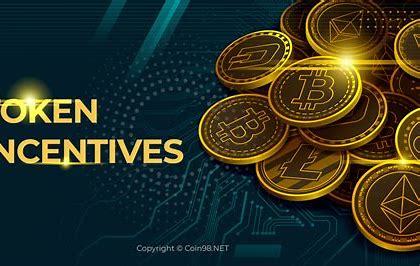In the decentralized world of blockchain and Web3, token incentives are one of the most powerful tools for driving user engagement, community growth, and ecosystem development. From DeFi protocols to NFT marketplaces and DAOs, token-based reward systems have become a central strategy in attracting users, bootstrapping liquidity, and aligning participant interests.
This article dives deep into what token incentives are, how they function, why they’re effective, and what challenges and best practices projects should consider. Whether you’re building a crypto platform, investing in Web3, or exploring the token economy, understanding incentive design is key to long-term success.
What Are Token Incentives?
Token incentives refer to rewards, often in the form of a project’s native cryptocurrency, given to users for performing specific actions that benefit the protocol or community. These actions can include:
- Providing liquidity (e.g., in decentralized exchanges)
- Participating in governance
- Staking tokens
- Holding tokens (loyalty rewards)
- Referring new users
- Contributing to development or content creation
In essence, they align user behavior with protocol goals, creating a win-win scenario.
Why Token Incentives Matter
In traditional business models, companies might spend money on marketing, discounts, or bonuses to attract and retain customers. In the Web3 space, token incentives replace or complement these strategies by offering ownership and rewards to users who contribute to the network’s growth.
Here’s why they’re so powerful:
- Bootstrapping Growth: Startups use token incentives to overcome the “cold start” problem. By rewarding early adopters and liquidity providers, they can attract a critical mass of users and volume.
- User Retention: Token rewards encourage users to remain active within a platform, often through mechanisms like staking, vesting, or gamification.
- Decentralization: Distributing tokens to users helps decentralize control and governance, aligning interests between founders, investors, and the community.
- Network Effects: As more users participate and earn tokens, they gain a vested interest in the protocol’s success, enhancing word-of-mouth promotion and community engagement.
Common Types of Token Incentives
- Liquidity Mining
Users earn tokens by providing liquidity to a protocol. This is common in DeFi platforms like Uniswap, Sushiswap, or Curve. - Airdrops
Projects distribute free tokens to wallet holders to reward early users or encourage adoption. - Staking Rewards
Token holders can lock their assets to secure the network and earn regular interest-like returns. - Play-to-Earn (P2E)
In GameFi ecosystems, users receive tokens for in-game activity or achievements. - Referral Programs
Users earn tokens by inviting others to join the platform, helping viral growth. - Governance Participation
Projects may incentivize token holders to vote on proposals, increasing DAO activity and community involvement.
Designing Effective Token Incentives
Poorly designed incentive structures can lead to unsustainable growth, short-term speculation, and eventual token value collapse. Effective token incentive programs should consider the following:
- Sustainability: Avoid overly generous emissions that dilute token value. Instead, implement reward curves that decrease over time.
- Alignment: Incentives should align with long-term goals, not just short-term hype (e.g., staking to promote holding, not just airdrops for farming).
- Vesting Schedules: Lock tokens for a set period to prevent immediate sell-offs and encourage continued participation.
- Targeted Actions: Reward behaviors that benefit the ecosystem — not just raw activity, but high-quality engagement.

Risks and Challenges
Despite their benefits, token incentives come with risks:
- Token Dumping: Users may exploit rewards and sell tokens immediately, causing price crashes.
- Sybil Attacks: Malicious users might create multiple wallets to farm airdrops or rewards.
- Unsustainable Growth: Some platforms grow rapidly due to incentives but lose users once rewards diminish.
- Complexity in Regulation: Incentivizing users with tokens could raise legal questions around securities laws depending on jurisdiction.
To counter these issues, many protocols implement anti-farming measures, on-chain reputation systems, and dynamic incentive adjustments based on user behavior and market conditions.
Real-World Examples
- Uniswap’s UNI Token: Initially distributed via an airdrop to early users, this token empowered community governance and incentivized protocol use.
- Axie Infinity (AXS and SLP): One of the first major P2E games, where users earned tokens through gameplay — though it later suffered from inflationary reward mechanics.
- Optimism’s Retroactive Public Goods Funding: Incentivizes developers and contributors not just for actions taken, but for outcomes achieved, rewarding impact over activity.
Conclusion
Token incentives are a cornerstone of the crypto and Web3 economy. When thoughtfully designed, they can transform users into stakeholders, promote rapid growth, and help protocols achieve decentralized governance and sustainability. However, they require careful calibration to avoid misuse, unsustainable tokenomics, and community disengagement.
As the industry matures, we’re seeing more sophisticated incentive mechanisms evolve — combining behavioral economics, game theory, and tokenomics — to create healthy, long-term ecosystems. For builders and investors alike, mastering token incentives is no longer optional — it’s essential.








Leave A Reply